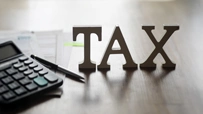Emergency Savings: Building a Financial Cushion with Emergency Fund
January 15, 2025

Let's assume Mr. X has a well-paying job. He is the sole breadwinner for his family of 6, which includes him, his spouse, two children and senior citizen parents. One day, Mr. X unexpectedly loses his job. Suddenly, Mr. X's main source of income is gone. He has bills to pay, including home loan EMI, children's school fees, and other essential expenses. Sounds like a stressful situation, right? But Mr. X doesn't panic - he knows he has a runway of another 2 years - thanks to the emergency fund he had built over the years.
However, such is not the case for many Indian. Did you know that a staggering 75% of Indians don't have emergency funds? The numbers are alarming. Having a savings corpus set for emergency funds can help you sail through tough financial situations.
In this piece, we have provided a few tips you can consider to build emergency savings fund for a stress-free financial life.
Emergency Savings: How to Build a Financial Emergency Fund?
Step 1: Determine How Much You Need
The first step in building an emergency fund is determining how much you need to set aside. While there are thumb rules suggesting that your emergency fund should be six to nine months of your fixed monthly expenses as a benchmark, however, this may differ based on your lifestyle, financial obligations and other such parameters.
Let’s understand this with examples:
Example 1: A double-income family with monthly expenses of ₹50,000 should aim for an emergency fund of at least six months' expenses (₹3 lakh).
Example 2: On the other hand, a single-income family with the same expenses may need 10-12 months' worth (₹5 - ₹6 lakh) to ensure financial stability.
To calculate the minimum amount needed for your emergency fund:
- Focus on unavoidable monthly expenses such as rent, EMIs, utility bills, etc.
- Exclude discretionary expenses like entertainment and travel from your calculations.
- Once you have this figured out, aim to create a cash fund that can cover three to six months of living expenses without any income.
Step 2: Choose the Right Investment Option
Ideally, your emergency savings should be easily accessible. Consider investment options that are safe from market fluctuations and provide stability. Let’s look at few options:
Option 1: High-Yield Savings Account
- Provides immediate liquidity during crunch situations
- High-yield Savings Accounts can help your emergency fund grow faster
- Easy to maintain and access
Option 2: Fixed Deposits
- Safe investment option with stable returns
- Offers greater flexibility in terms of tenure and withdrawal options*
- Amount up to ₹5 lakh insured under DICGC (Deposit Insurance and Credit Guarantee Corporation)
*Ujjivan SFB doesn't levy any penalty on its Fixed Deposits for withdrawals made after 6 months from the time of investment. Please note: Premature withdrawals are not applicable for non-callable FDs.
Recurring Deposits
- No penalty charges for premature withdrawals
- One of the best investment channels to build emergency corpus
- Brings discipline in saving money
Debt Mutual Funds
- Low-risk investment option compared to equity funds.
- Provides steady returns and stability.
- Ideal for maintaining the value of your emergency fund while earning moderate returns.
- Start a Systematic Investment Plan (SIP) to build your emergency fund over time with disciplined investing.
Disclaimer for Mutual Funds: Mutual Fund investments are subject to market risks, read all scheme-related documents carefully.
Step 3: Automate Your Savings
Building an emergency fund requires consistency and discipline. One way to ensure you're saving regularly is by automating your investments. Schedule automatic transfers from your primary account to your emergency fund savings account so that a portion of your income is diverted towards the account as soon as you get your salary. This eliminates the need to remember and manually transfer funds each time.
Consider setting up Recurring Deposits or Systematic Investment Plans (SIPs) that automatically deduct a fixed amount from your account at regular intervals. By automating your savings, you make it a non-negotiable expense and develop a habit of prioritising financial security.
Step 4: Sign up for a Comprehensive Insurance Plan
Healthcare costs in India are rising rapidly. A few days of hospitalisation can take a toll on your finances. Signing up for a comprehensive insurance plan could help in providing financial protection against unexpected events like medical emergencies.
Remember, insurance should complement but not replace your emergency fund. Insurance is not designed to cover day-to-day expenses, making an emergency fund necessary for financial stability.
Step 5: Using Your Emergency Savings Wisely
Use your emergency fund exclusively for genuine emergencies to maintain its efficacy. Establish clear guidelines for accessing these funds based on specific situations, such as medical emergencies, essential home repairs, or temporary income loss due to unforeseen circumstances.
These parameters prevent impulsive or unnecessary spending that could deplete your emergency fund prematurely.
Emergency Savings: 3 Major Don'ts When Saving for Financial Emergency Fund
1. Don’t Live Beyond Your Means
Avoiding overspending is crucial, especially considering lifestyle inflation, where expenses tend to rise with income. It's essential to budget wisely, and prioritise needs over wants.
2. Don't Fall into the Debt Trap
Debt trap happens when you pile up credit card bills or take out too many loans beyond your repayment capacity. It's considered as a vicious cycle that could lead to tremendous financial stress.
3. Don't Treat Your Health Insurance as Your Only Safety Net
One major mistake people make is that they treat their health insurance as a replacement for an emergency fund. While health insurance covers medical expenses, it may not suffice for other unforeseen financial needs.
Final Thoughts
In today's day and age, emergency savings are extremely important for financial security. Build a robust financial emergency fund and handle life's unexpected curveballs effectively.
If you're just starting out in your savings journey, opening a Savings Account with Ujjivan Small Finance Bank can be a good start. We have a wide variety of Savings Accounts catering to different financial needs - sign up for the one that meets your financial goals. Alternatively, you can browse through Ujjivan SFB product suite - our wide range of financial products are designed to make your financial life better.
Disclaimer:
The contents herein are only for informational purposes and generic in nature. The content does not amount to an offer, invitation or solicitation of any kind to buy or sell, and are not intended to create any legal rights or obligations. This information is subject to updation, completion, amendment and verification without notice. The contents herein are also subject to other product-specific terms and conditions, as well as any applicable third-party terms and conditions, for which Ujjivan Small Finance Bank assumes no responsibility or liability.
Nothing contained herein is intended to constitute financial, investment, legal, tax, or any other professional advice or opinion. Please obtain professional advice before making investment or any other decisions. Any investment decisions that may be made by the you shall be at your own sole discretion, independent analysis and evaluation of the risks involved. The use of any information set out in this document is entirely at the user’s own risk. Ujjivan Small Finance Bank Limited makes no representation or warranty, express or implied, as to the accuracy and completeness for any information herein. The Bank disclaims any and all liability for any loss or damage (direct, indirect, consequential, or otherwise) incurred by you due to use of or due to investment, product application decisions made by you on the basis of the contents herein. While the information is prepared in good faith from sources deemed reliable (including public sources), the Bank disclaims any liability with respect to accuracy of information or any error or omission or any loss or damage incurred by anyone in reliance on the contents herein, in any manner whatsoever.
To know more about Ujjivan Small Finance Bank Products Visit:"https://www.ujjivansfb.in"
All intellectual property rights, including copyrights, trademarks, and other proprietary rights, pertaining to the content and materials displayed herein, belong
to Ujjivan Small Finance Bank Limited or its licensors. Unauthorised use or misuse of any intellectual property, or other content displayed herein is strictly prohibited and the same is not intended for distribution to, or use by, any person in any jurisdiction where such distribution or use would (by reason of that person’s nationality, residence or otherwise) be contrary to law or registration or would subject Ujjivan Small Finance Bank Limited or its affiliates to any licensing or registration requirements.
FAQs
1. How much should I have in my emergency savings?
The recommended amount for an emergency fund is generally six to nine months of your fixed monthly expenses. However, this may vary based on your lifestyle, financial obligations and other such parameters.
2. How do I start saving for emergencies?
Start small by setting aside a portion of your income each month. You can open a Savings Account to do so. Create a budget and automate your savings to ensure consistent contributions.
3. What is an emergency savings fund?
An emergency savings fund is a dedicated Savings Account where you keep money reserved for unexpected expenses or emergencies.
4. Is ₹ 1 lakh enough for an emergency fund?
While 1 lakh is a good starting point, it may not be sufficient for all emergencies. Assess your monthly expenses and aim to save at least six months' worth as your financial emergency fund.
5. Is a Fixed Deposit good for emergency savings?
Fixed Deposits can be a suitable option for an emergency fund due to their stability and guaranteed returns.
6. How do I calculate my emergency fund?
Calculate your monthly expenses, including essential costs such as rent, loan installments, and utility bills. Multiply this by the recommended number of months (e.g., six to nine) to determine your emergency fund goal.
7. What is the rule of an emergency fund?
The general rule of thumb is to save six to nine months' worth of fixed monthly expenses in an easily accessible and low-risk asset class.
8. Is it possible to build an emergency fund on a tight budget?
Yes, even on a tight budget, you can start saving for emergencies by setting aside small amounts regularly. Consistency is key, and over time, these savings will accumulate to form a substantial emergency fund.
9. Should I include my retirement savings in my financial emergency fund?
It's important to keep your retirement savings separate from your emergency fund. Retirement savings should be preserved for long-term goals and not used for immediate financial needs. However, it's recommended to consult a SEBI-registered financial adviser for better clarity.
Latest Blogs

ITR-1 (Sahaj) Restrictions: Income Sources Not Allowed & Filing Rules
With just a few days left before the 15 September 2025 deadline for filing Income Tax Returns (ITRs) for Assessment Year (AY) 2025-26, many taxpayers are rushing to submit their forms online.

GST Rate Cut on Electronics: What It Means for Consumers and Retailers
India’s Goods and Services Tax (GST) system has entered a new era with the rollout of GST 2.0, effective from September 22, 2025.

Banking Safety Guide: How to Avoid QR Code Frauds While Making Payments
India’s love for QR code payments has made transactions lightning-fast, but also opened a new front for cybercriminals.

Scam Alert! Phishing, Vishing, and Smishing Can Drain Out Your Finances
Digital banking in India has transformed the way we manage money.

India’s New GST Reform Bill: What GST 2.0 Means for You
India’s indirect tax system is entering a landmark new phase.





